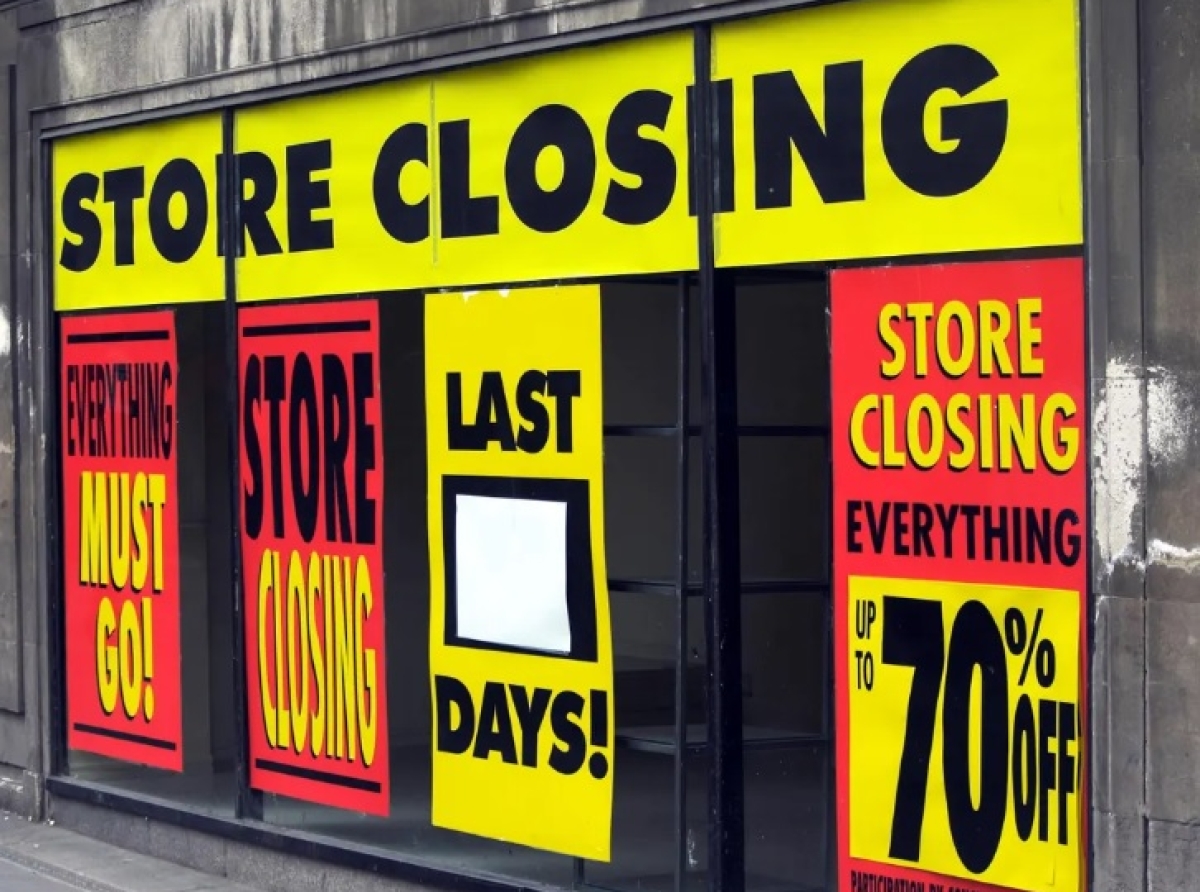Retail Reset: Are store closures paving the way for healthier expansion?

After a period of aggressive, often unsustainable expansion, leading retailers in India are now adopting a more cautious approach, focusing on profits and sustainable growth. This shift, due to reasons like miscalculations in store sizing, unrealistic performance expectations, and a prolonged consumption slowdown, prompts a critical question: Does the recent wave of store closures truly pave the way for a healthier and more resilient expansion for the industry?
Major players like Reliance Retail, Arvind Fashions, Aditya Birla Fashion & Retail (ABFRL), Spencer’s Retail, Shoppers Stop, and V-Mart have collectively shed hundreds of underperforming stores over the past two years. This "clean up" phase, as many executives term it, is reportedly over, replaced by a focus on larger, more profitable outlets primarily in metros and Tier I cities.
Reasons for store closures
The widespread shuttering of retail outlets stems from a blend of internal missteps and external economic pressures.
1. The "revenge shopping" bubble burst: The post-pandemic surge in consumer demand, often termed "revenge shopping," led to rapid expansion by many retailers. The underlying assumption was that this buoyant demand would be sustained.
However, as inflationary pressures on essential goods persisted and discretionary spending tightened, particularly in the mass and mid-range segments, many of these newly opened stores quickly became unviable. Retailers had simply overextended, failing to anticipate the normalization of consumer behavior.
2. Misjudgment of store size and location: A critical factor for closures was the opening of stores that were "too small, not strategic," as highlighted by Shailesh Chaturvedi, MD of Arvind Fashions. These outlets struggled with low "sell-throughs" and necessitated aggressive discounting, directly eroding profitability. The previous expansion often prioritized footprint over strategic placement and optimal sizing.
3. Unrealistic performance expectations: In the race for market share, rigorous operational benchmarks and profit criteria for new stores were sometimes overlooked. This led to a situation where numerous outlets became financial drains rather than assets. The current resolve to apply "strict operational guardrails" for new stores is a direct acknowledgment of these past oversights.
Right store size a dilemma?
Indeed, industry leaders' statements strongly indicate that a lack of clarity regarding the "right size of store" and unrealistic performance expectations were paramount in the decision to rationalize store networks.
Aditya Birla Fashion's Pantaloons, for example, is now explicitly opting for "larger stores, focused largely on metros and mini metros and Tier I cities." This underscores the realization that smaller formats or those in less strategic locations were not delivering the desired returns. Similarly, Shoppers Stop's Managing Director, Kavindra Mishra, noted challenges in securing "the right location, right mall," suggesting that past expansions might have compromised on location quality in the pursuit of growth.
The current emphasis on new stores being "profitable in the first six months" (Spencer's Retail) and aiming for a "higher rate of success" (V-Mart) signifies a fundamental shift from top-line growth to sustainable profitability as the primary driver for expansion.
Is consumption slowdown the real reason?
Consumption slowdown has undoubtedly been a major catalyst for the retail sector's challenges.
• Impact on discretionary spending: Persistent inflation has curtailed household budgets, forcing consumers to reduce discretionary spending on items like fashion and apparel. This trend disproportionately affected mass and mid-range segments, where many shuttered stores operated.
• Impact of Tier II, III cities: Reliance Retail's decision to shut over 2,100 underperforming stores, "particularly in mass and mid-range segments and in smaller towns," highlights the vulnerability of these markets to economic pressures. While once seen as major growth frontiers, consumption in these areas has proven more susceptible to slowdowns.
• Outlook on slowdown: Retailers' cautious strategies, including "calibrated store expansion" and a focus on "sustainable and strategic growth," suggest an anticipation of the slowdown persisting. They are building more resilient business models rather than expecting a rapid rebound in consumer demand.
A report by the Retailers Association of India (RAI) noted deceleration: sales growth in organized retail segments slowed to mid-single digits in 2024, a sharp contrast to the 15 per cent growth seen in 2022. This indicates a prolonged period of subdued consumer sentiment.
Table 1: Organized retail sales growth in India (YoY)
|
Year |
Sales Growth (%) |
Source |
|
2022 |
15% |
RAI |
|
2024 |
Mid-single digit |
RAI |
Source: Retailers Association of India (RAI)
The role of smaller cities
The distinction between Tier I cities and others which is Tier II, III is increasingly central to retailers' refined expansion strategies.
Tier I cities as profit hubs: Retailers like ABFRL are explicitly focusing on "metros and mini metros and Class 1 towns." These areas are perceived as more stable and profitable markets for larger format stores and premium brands, driven by higher disposable incomes and a greater propensity for discretionary spending.
Cautious approach so smaller cities: While V-Mart, which primarily operates in smaller towns, emphasizes "economical property selection and conservative in rentals," this indicates a more guarded approach. The lessons learned from the consumption slowdown's impact on smaller towns are clearly influencing this strategy.
Emerging hybrid models: Some reports suggest that while Tier I cities remain crucial for physical retail, Tier II, III cities are becoming significant drivers for e-commerce growth. This might lead to diversified physical store formats – large experience stores in Tier I and smaller, perhaps value-focused or omnichannel-integrated stores in Tier II, III.
Table: Store expansion trend by major retailers (FY23-FY24)
|
Retailer |
FY23 (Approx. New stores added) |
FY24 (Approx. stores shut) |
FY25 (new strategy) |
|
Reliance Retail |
~3300+ |
>2,100 |
Focus on profitability; 500-550 new stores/year |
|
Arvind Fashions |
Significant |
70 |
Adding 120,000-150,000 sq ft in FY25/26 |
|
ABFRL |
Significant |
>200 (FY25) |
Opening 300 new brand stores, 20 Pantaloon outlets (FY26) |
|
Spencer’s Retail |
Significant |
47 |
Strict profitability benchmarks for new stores |
|
Shoppers Stop |
Significant |
9 |
Opening 7 stores & 60 value fashion stores (FY26) |
|
V-Mart |
Significant |
9 |
Economical property selection, conservative rentals |
The rationalization is already yielding positive results. Reliance Retail's earnings before interest, taxes, depreciation, and amortisation (EBITDA) grew by 20 basis points last fiscal year, a direct outcome of weeding out non-performing stores and improving operational efficiencies. Similarly, ABFRL, after rationalizing over 190 brand stores and 15 Pantaloons outlets in FY25, is now emphasizing "stronger set of guardrails" for new stores, prioritizing "larger stores, focused largely on metros and mini metros and class 1 towns." This change in focus, coupled with their Q1 FY25 EBITDA growth of 15 per cent YoY (despite a tough demand environment), suggests a successful shift towards margin growth over mere revenue growth.
V-Mart's chairman, Lalit Agarwal, clearly states they are trying to learn from past mistakes because they have closed down a lot of stores. Their new approach focuses on ensuring new stores have a "higher rate of success" through economical property selection and conservative rentals, especially pertinent for their presence in smaller towns.
In essence, the recent store closures are not a sign of retreat but a necessary reset for Indian fashion and apparel retailers. By addressing past miscalculations in expansion, re-evaluating store economics, and adapting to evolving consumer behavior and economic realities, the industry is charting a course towards more sustainable and profitable growth. The shift towards quality over quantity, and a sharpened focus on Tier I cities while being cautious in others, suggests a more mature and resilient retail landscape is emerging.
























